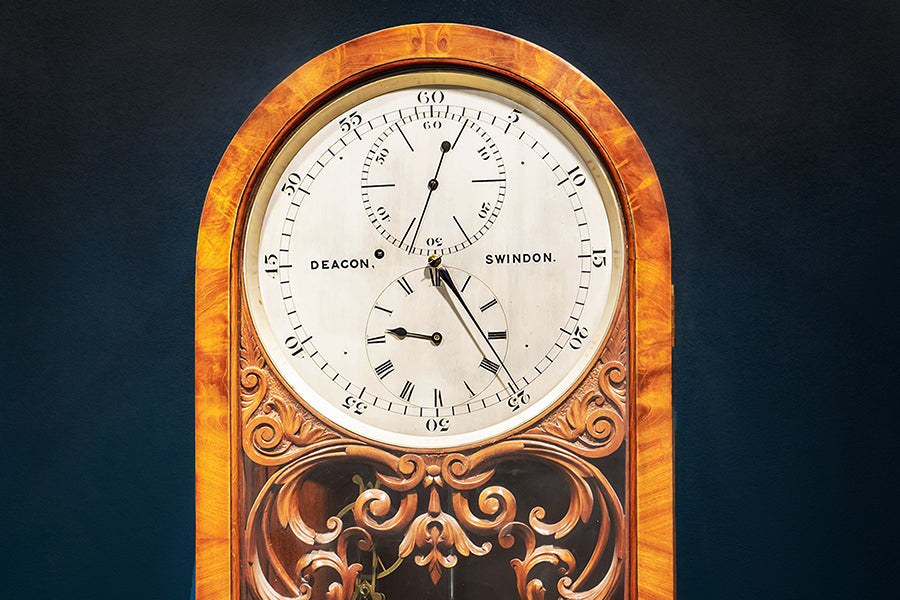What are the precious metals?
The term ‘fine jewellery’ is used to describe any jewellery that is made from precious metals. If a metal is valuable, rare, and makes beautiful jewellery, it is considered precious. The precious metals, those used most commonly in jewellery, are platinum, gold, palladium and silver.
One of the most important things to look for when purchasing jewellery is the piece’s sustainability. The precious metals have a high surface lustre, and will not rust or corrode if taken care of properly, meaning that they are durable. The metal also plays an important role in the appearance, and cost of a piece of jewellery, which we will consider as we develop your understanding of each of the precious metals. To deepen your knowledge of jewellery, take a look at our articles about diamond shapes, ring settings and styles, and the diamond 4C's.
As well as beauty and sustainability, these metals have a high economic value, and in some cases, have been used as currency.
What is metal carat?
The metal carat refers to the quantity of pure gold contained in a metal. The purity level is stamped on the piece of jewellery, which is called a hallmark.
The most cost effective metal carat is 9ct, which is hallmarked 375, meaning that it is 37.5% pure gold, the rest consisting of other metals. Next is 14ct, which contains 585 (58.5%) pure gold.
18ct gold provides a rich yellow or rose hue due to its high content. Therefore, it is durable and considered ideal for engagement rings and wedding bands which are worn daily. Our gold engagement rings are all 18 carat hallmarked. The purest forms of gold are 22ct, and 24ct, which contain 91.6% and 99% respectively. These are less commonly available in the UK, and is usually reserved for bespoke commissions.
Which metal should I choose?
Gold
Gold is unique for its durability, non-corrosive nature, and lasting beauty. Whether you prefer yellow gold, white gold or rose gold, this precious metal brings unmatched beauty, timelessness and class to any piece of jewellery.
The most popular shade of precious metal has historically been yellow gold. Its spectacular ability to stay tarnish free, to not lose its colour over time, and to continually be cost effective makes it the perfect choice for many jewellery buyers.
Today, white gold is another popular choice - it is alloyed with stronger metals than yellow gold, making it more durable and scratch-resistant. It gives the same look as platinum, often at a lower price. In the unlikely event that a gold piece does become damaged, it can be easily repaired or refinished.
Silver
Of all the precious metals that are readily available in the UK, silver is by far the most cost effective. Silver contains 92.5% pure silver, mixed with other metals such as copper to prevent scratching.
You can find some very beautiful, silver pieces for a reasonable price. Silver’s value extends well beyond its price; its beauty, versatility, lustre and rarity makes this precious metal a very desirable choice for jewellery.
Keeping silver looking its best, though, does require considerably more maintenance than the other precious metals. This is because silver can react with the air in a process called oxidation, which can cause it to become dull looking. However, this doesn’t extend to the metal underneath the top layer, meaning that the discolouration can be easily removed by a cleaning cloth, or by being cleaned or polished by a specialist.
Platinum
Over the past years, platinum has grown in popularity as a choice of metal in jewellery. Platinum is a hard-wearing metal, meaning that it is very durable and a popular choice for men’s wedding bands. Platinum is equally as beautiful as it is strong, even when subjected to daily wear and tear. Unlike silver, platinum is fairly unreactive, so will tarnish less over time. Lustre can be easily restored with a professional polish.
These desirable characteristics are reflected in its price, and it can be more expensive than the other precious metals.
Palladium
Palladium is part of the platinum family, and therefore, displays many of the same desirable qualities that are sought out by jewellery buyers. It is naturally white in colour, and lends a high sheen and is luxurious in appearance.
Palladium is better for simple designs, as it can be difficult to work with. The strong and durable, and easy to maintain nature of palladium means that it is another great option for men’s wedding bands and jewellery. It is lighter than traditional platinum, harder and even more scratch resistant.
However, despite these advantages, like any other precious metal, it is not indestructible and can scratch or dent.















